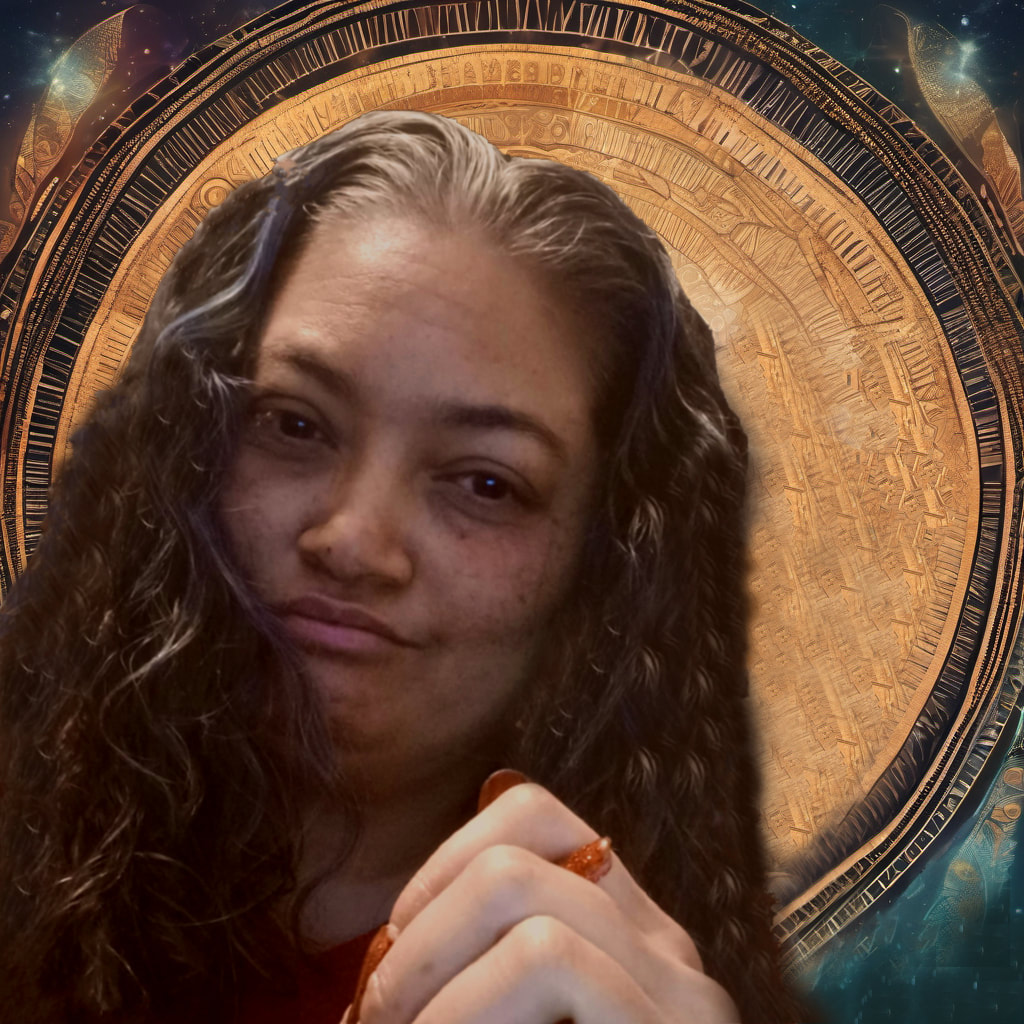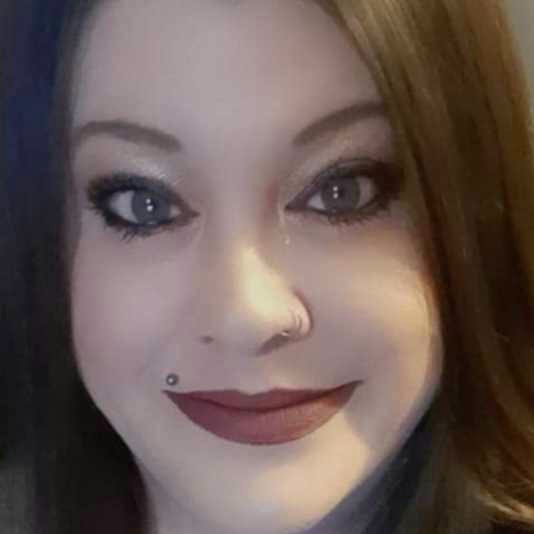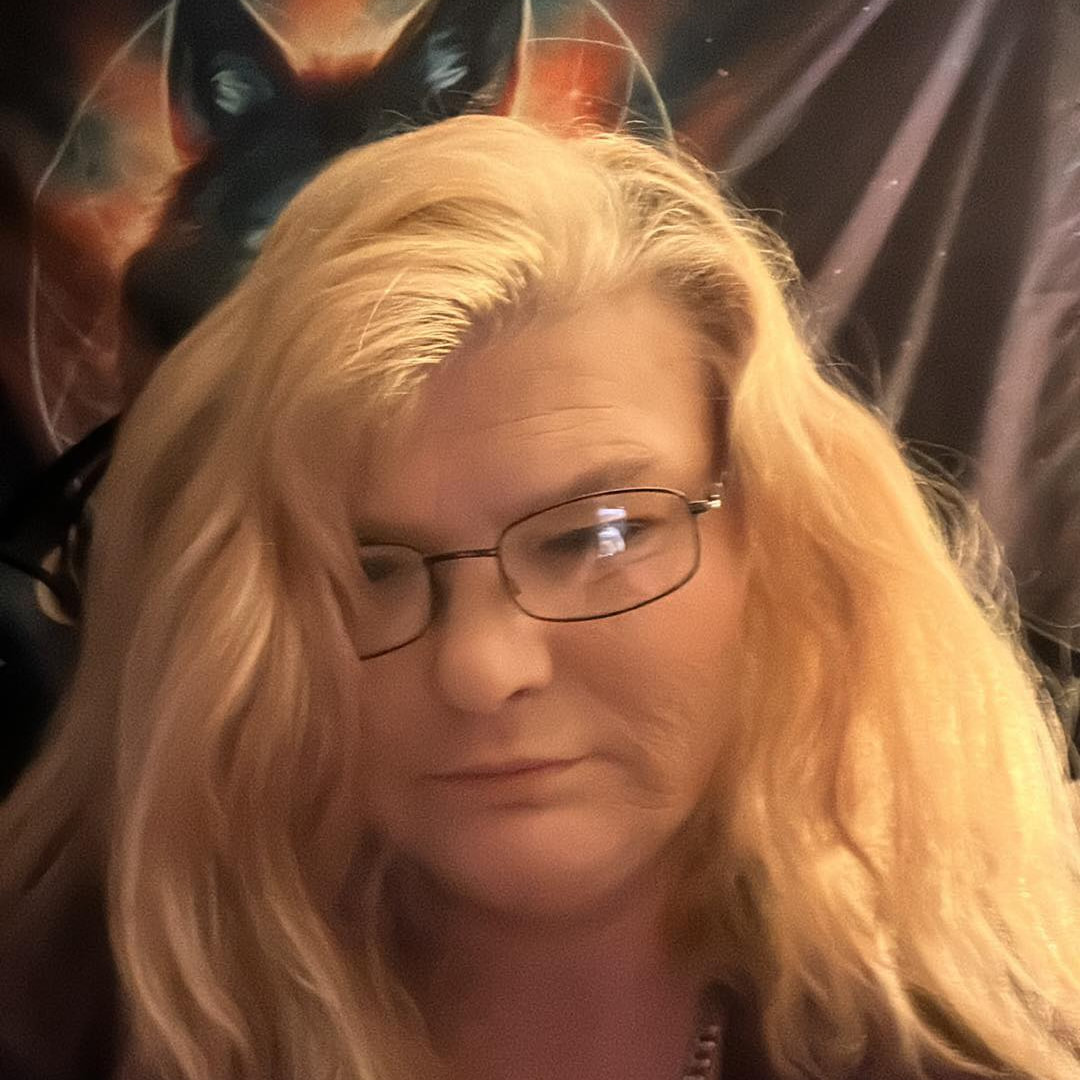Book Reviews - AVIA I: Thunderstorms & 45’s & AVIA II: Bullets & Betrayal by Stacey Carroll11/8/2018 “AVIA I: Thunderstorms & 45’s” is the debut novel for thriller author Stacey Carroll. “AVIA II: Bullets & Betrayal” is the follow-up. I decided to review both novels together since AVIA I leads directly into AVIA II, although AVIA II can be read as a stand-alone. Personally, I recommend reading AVIA I first, as it will make AVIA II more enjoyable as far as getting to know the main characters and understanding the “why” of events in the second book. 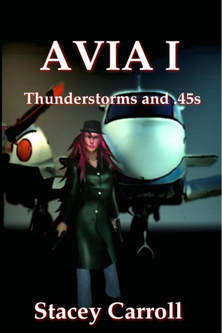 Thunderstorms & 45’s! In “AVIA I: Thunderstorms & 45’s,” we meet the title character, Avia Conn. We learn pretty much right away that she has a chance to con a rich woman out of fifty million dollars before her vacation to Hawaii. She’s going to need help to do it, though. To do this, she calls in people she calls her “cousins.” Meanwhile, she is still dealing with serious heroin addiction and alcoholism that she’s been battling for many years. Can her protector and love of her life, Benton Docks, help Avia pull of this heist and get the hell out of town before it’s too late? This heist thriller is a page-turner. It’s fast-paced with many twists and turns. As is the case with many best-laid plans, things don’t go according to plan. You really don’t know where the plot is going next. The unpredictability of AVIA I is a major part of this book’s appeal. For me, the best part of this book is the two main characters, Avia Conn and Benton Docks. While they definitely have a steamy romance, it’s an extremely complex relationship. Benton has to put up with a lot of nonsense with Avia with alcohol and drug addictions, but he loves her as she is, which isn’t easy. There’s a lot going on in AVIA I, but it’s deftly handled by the author. It isn’t what you might call a “high-octane” thriller, but it gets you hooked pretty much from the first page. Avia and Benton are very likeable characters, and while there are others, they are certainly the most likeable. This is good, because they are the main characters in AVIA II, as well. Be forewarned that it does contain a fair amount of sex scenes, but all are important in the development of both the plot and characters. It’s not an erotic romance, but this book definitely has plenty of adult scenes. Then again, in Avia and Benton’s line of work, especially Benton’s as a con man, sex is often a major part of the job. Avia does her fair share of conning, too, of course. All in all, AVIA I is a solid 4-star debut novel. It has realistic, likeable main characters and an unpredictable ending. All you need to know is that we will be seeing Avia, Benton, and many other of the characters in this book again in AVIA II. I highly recommend this book for anyone who’s tired of the formulaic heist thrillers and is looking for something more original to read. 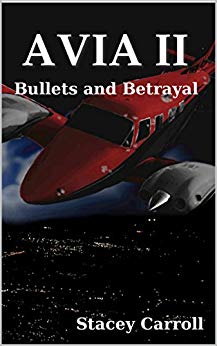 Bullets & Betrayal! In “AVIA II: Bullets & Betrayal,” we meet Avia and Benton soon after the events of AVIA I. But, this book is a lot more complex than the first AVIA novel. It involves three different plotlines and switches between being an organized crime family thriller, a more traditional thriller, and a police procedural. This book features not only Avia and Benton, but also a rival organized crime family in the Sanchez, and Detective Greg Locke. Locke is on a mission to put away both Avia and Benton. After a heist gone bad, Avia and Benton have narrowly escaped jail time. But, they are very much stuck in their life of crime and don’t have any intention of getting out of it. So, will Avia and Benton make it to their Hawaii vacation, or will they end up in jail? We also meet the leader and the pilot of the Sanchez organized crime family. The war is on between the Company that Avia and Benton belong to and the Sanchez. The Sanchez was introduced briefly in AVIA I, but now we learn the ins and outs in their rivalry with the Company. Also, we learn more about the workings of the inner workings of the Company. Without giving too much away, it’s clear that both Locke and the Sanchez are working hard to take down the Company. They are clearly for different reasons, but they are both taking steps, some more extreme than others, to get the job done. Even more action-packed than AVIA I with even more twists and turns than the first book in the series, “AVIA II: Bullets & Betrayal” is a long, much more involved book that develops both the main characters, Avia and Benton, and others that were only glanced over in AVIA I. Like AVIA I, this is not an erotic romance brand of thriller, but it does contain many sex scenes - all of which make sense in character development and moving the plot forward. Just be forewarned if you are sensitive to lots of adult content. Also, I will warn you that AVIA II has a cliffhanger ending that will have you biting your nails to the nub in anticipation for AVIA III. This book really keeps you on the edge of your chair right up until the end and slams you with dire circumstances that won’t be resolved until the next book. “Bullets and Betrayal” is a 5-star thriller in the eyes of this reviewer. --- If either of these books sound like your speed, I invite you to check AVIA I and AVIA II out on Amazon! If you like them, please leave an honest review. The author greatly appreciates it! ** I received review copies of these ebooks in exchange for fair and honest reviews.
0 Comments
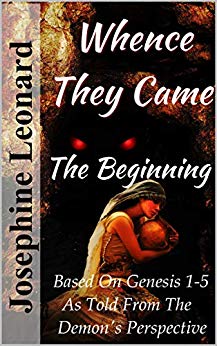 “Whence They Came: The Beginning” is a biblical historical fiction/horror novel written by Josephine Leonard. Be warned, though, that while this book is not erotica, there may be a bit more carnality (sex scenes) than you’re expecting from a book based on biblical events. But, the sex is -mostly - integral to the plot. So, what’s this book about? What’s particularly fascinating about this book is that it follows two demons, Vetis and Asmodeus, as well as the wickedest woman on earth, Lilith. If you’re familiar with demonology, those names will sound familiar. Basically, when the world began, there were first demons. But as the world brightened, humans began to take over the earth, the demons had to go into hiding. The first demon in the world, Vetis, wishes to possess a human body in order to be able to go out into the light. This is so he can spread darkness and evil into the world against the wishes of God. But to do this, he needs the help of another powerful demon by the name of Asmodeus and his human sorceress, Lilith. Because the demons can’t go out in the daytime, or be burned to ashes. So, Lilith has to be a big part of their plan. After damning the first humans created by God, Vetis finally finds the human body he wishes to inhabit. But first, he must be corrupted enough for Vetis to possess him. Asmodeus and Lilith need to help corrupt the target human by convincing him to lay with his sister and kill his brother. Only then will the man’s heart be “black” enough for Vetis to possess. Of course, things don’t go exactly according to plan. Without giving too much away, if you know the story of Genesis chapters one through five, you may be able to guess at some major events in the storyline. Since this is meant to be a spoiler-free review, I’ll just go into some of the better points of this book. Two of the characters in this book are actually quite likeable. Asmodeus and Lilith really are the “heroes” of this book. The relationship between the two is actually quite adorable. While there are plenty of impromptu sexual encounters that didn’t really further the plot, necessarily, it’s clear that there is far more to this relationship than just the sex. Also, while Vetis may be considered the “villain,” it’s really not that black and white. In fact, in this book, God is essentially considered the bad guy. You don’t read many books like this, but the way that it’s done, who’s actually good and who’s actually evil is really up to interpretation. By following the characters who would traditionally be the “bad guys” is what makes this story such a page-turner. Lastly, the world is very well laid out and follows the biblical stories quite well. But, the twists and turns in the plot and the interference of Vetis and Asmodeus makes for quite an entertaining read. But, be forewarned that this book is actually quite disturbing. It may even give you nightmares. But, sparing no details is one of this book’s best qualities. As I’ve said already, there’s really nothing like this book out there. There isn’t really a proper genre to nail down what this book really fits into. That’s a plus for those that get into this sort of thing. One thing that would have been good to see were more direct confrontations between demons and angels, as well as more scenes with Lucifer himself and God himself. Since those were out of the scope of this particular plot, though, those could be featured in another story. As is, focusing on the main characters kept the pace of the book moving, so that was a fine decision on the part of the author. As biblical retellings go, especially with a horror aspect told from the perspective of the demons and their wicked human, this is definitely a page-turner. It may not be your thing. But, if it sounds like it interests you just from the description alone, then this book is worth a read for you. Just be sure that you’re OK with a lot of sex between a demon and a human, and you’ll probably enjoy “Whence They Came.” You can buy “Whence They Came: the Beginning” on Amazon in Kindle or paperback format. by Phoenix A. Desertsong, Staff Writer, Healer & Advocate 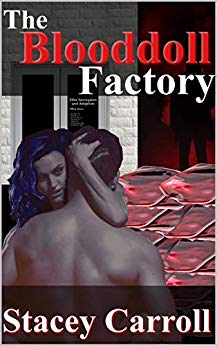 The Blooddoll Factory is a rising paranormal erotica novel written by Stacey Carroll. While it’s not typically a genre that I’d read, the premise sounded good enough to make it worth the read. The story is that an unemployed male nurse lands a job at a reproductive clinic. Right away, though, it’s clear something isn’t right. After being unemployed for a year, the protagonist William gets a call from Elite Surrogates and Adopted - also known as ESA - for an interview. The interview with the HR manager starts out normal, until he realizes he’ll have to “perform” to get the fifty dollar an hour job. But, he needs the money to catch up on his underwater mortgage and save his marriage, one he’s not even sure he really wants to save. Things only get weirder, though, as William discovers ESA is keeping plenty of secrets, including that those adopting their babies he’s helping to create are actually vampires who are looking for a ready supply of fresh blood. The story is well-paced and while it starts off on a wild sexual note, it’s not clear that anything is terribly wrong until well into the first act of the book. But, things are off-beat enough to keep you interested, and as the climax is reached in the story, you get hooked in rather quickly. There’s plenty of dangerous encounters, and you never quite know just how close William and Sadie will come to being killed for what they learn. Besides the weird, gross stuff going on with ESA, it’s the chemistry - sexual and otherwise - between William and Sadie that really drove the book forward. There are some clever plot twists and turns to keep the story exciting. Without giving too much away, the ending is satisfying, but also rather disturbing. Overall, “The Blooddoll Factory” is a solid paranormal erotica novel with a well-paced plot, good characters, plenty of sex scenes, and with just enough vampire intrigue to make it interesting, but not overwhelming. This book is definitely worth a read if plot-centered erotica is your thing. Buy “The Blooddoll Factory” here on Amazon or read it on Kindle Unlimited. **I was given a free copy of this book in exchange for a fair and honest review.  If you've ever searched for work from home jobs, you know how hard it is to find legitimate opportunities. In her guide, "The One-and-Only Internet Money Making Guide!" Stephanie Nolan explains everything you need to know about searching for work you can do from home. You may be wondering if it's even possible, with as many scams out there as there are. Is it really possible to make money at home with real, legitimate companies? Yes it is very possible and Stephanie Nolan is very spot on in her internet money making guide! This info is legit! I'm a mom of six with a 7th on the way. My youngest was a preemie and we lived at the hospital NICU for a month with her and worked during - at the hospital! Our one year old (at the time) was at the hospital with us for that too and often some of the other kids were as well. Now this 7th pregnancy is very high risk and here I am STILL working at home and STILL making money. If you do the work, you will get paid. Even though I run an entire network of websites, I love doing multiple things, rather than just one. I'm always trying new things - but I need them all to be at home. That's why I grabbed myself a copy of this great work from home guide. Not only does she explain how to go about things step by step, using her personal experience. But she also reveals all of her work from home secrets and even includes over 400 companies with thousands of legitimate international opportunities to make it easy for you to get started today! I've been working from home for years and I was still able to find some opportunities in Stephanie's book that I hadn't heard of or tried before. My personal favorite part is that Stephanie also includes with her ebook exclusive access to her work from home support group on Facebook, as well as her personal help. If you don't find a job after purchasing this work at home guide, you didn't try at all. If you need to find something legitimate that you can get started on right away, this ebook could be your solution. You never know what you might find to make money in your spare time or even full time. No experience is required for any of the positions listed and there are all different types of opportunities, such as data entry, web writing, internet research, online tutoring, chat jobs, micro jobs, book reviewing, product reviewers, telephone jobs, smartphone only jobs, and so many more! You can get started today by checking out "The One-and-Only Internet Money Making Guide!" by Stephanie Nolan! * I am an affiliate of this product. However, the content of this post is 100% honest based on experience and not influenced by the affiliation. Last updated 4/30/2023 I recently had an interesting conversation with Brad F. Pollins about the subject matter of his book, “Awakening Your Organization.” In his book, he talks about how to “awaken” the healthcare field with a commitment to excellence. Learn what Brad recommends, based on the subject matter of his book, as well as his experience in the healthcare field both as a professional and a patient.
Q: What inspired you to write “Awakening Your Organization”? A: Actually, the experience with my father as he battled cancer coupled with my fifteen plus years leading improvement efforts in healthcare where I saw first hand the opportunities to re-humanize healthcare. I believe that everyone, despite their clinical condition, should receive compassionate high quality care from a team that is passionately committed to excellence from before the patient arrives until after the patient leaves and every touch-point in between. Q: In what ways do you feel healthcare organizations need awakening? A: In many ways, I believe those of us who work in healthcare are rushing, frustrated, fatigued or complacent based on a number of environmental factors. When we are rushing, frustrated, fatigued or complacent we cannot be truly present. This has resulted in many healthcare workers being principally task focused/task-centric which blinds them to what it truly means to be patient focused and centric. I have worked with and for so many different industries and what sets healthcare apart from other industries is we are dealing human beings who are experiencing pain, anxiety, stress, uncertainty, and even tragedy. This requires healthcare workers to be incredibly emotionally intelligent, empathetic, compassionate and clinically exceptional. Q: Who can get the most out of reading this book? A: Every healthcare employee including providers and leaders. Especially leaders because they foster the culture that influences behavior which determines the results achieved. I believe there are incredibly talented and committed healthcare workers who are constrained by ill conceived processes and outdated policies and procedures designed to govern behavior. Q: Do you feel that lessons from this book could help awaken organizations in other industries, as well? A: I do. The Awakening Organization Model is transferable to any industry or business. Every business should be setting clear and consistent direction, building a strategy supportive culture, staffing the enterprise with high performing employees and multiplying the efforts through continuous process improvement. I believe the performance of people is the physics of organizational performance because the behavior of people (actions and decisions) determines the results the company will experience. Q: If readers can take away just one or two things from reading your book, what do you expect them to learn? A: First, performance of an organization is not based on any single element - it's not just leadership, it's not just culture, it's not just people, it's not just strategy and it's not just processes - it is the synchronization of all of these components. Second, culture is critically important and most organizations only pay it lip service. There is a reason that enlightened people say “culture eats strategy for breakfast, lunch and dinner” - because most of the time it does. This is because culture either engages or disengages people, it energizes or de-energizes people and it connects or disconnects people. A healthy and fit culture engages and energizes the people to behave in strategy supportive ways. The connection between strategy and culture becomes clearer in this context – for successful strategy execution people have to behave in a strategy supportive manner, which has to be reflected in the core values of the organization and everything has to reinforce this imperative. Culture can either be designed, or it happens by default. A culture by default is what naturally emerges whereas a culture by design is a deliberate reconstruction of the elements that purposefully develop the desired culture needed to execute the strategy. Q: Where can interested parties purchase your book, “Awakening Your Organization”? A: Amazon & Barnes and Noble LAST UPDATED 1/3/2024 |
Book News, Reviews, & Info
Archives
November 2018
Categories
All
|
- Brand Shamans
- Brand Healing
- Inner Healing
-
INTENT-SIVE NATURE
- Content & Brand Elevation
- Healing Jewelry & Talismans
- Bath, Beauty, & Self-Care
- Healing Sessions
- Rituals, Herbs, & Altar Supplies
- Gawwwdess Baby Boutique
- Soul Flame Gifts
- Yoga & Meditation
- Books & Media
- Education & Homeschool Resources
- Home, RV, & Decor
- Clothing
- Pets
- Custom Orders
- Monthly Subscription Boxes
- October Festivals
- FLOW-Key Parenting
- About & Contact
- RV, Nature, & Travel Shamans
- Souls Within
- Life & Home
- Heart 'N Mind Homeschool
- The Homeschooling Mommy
- Books & Authors
- Speak Up!
- Pawsitive Pet Parenting
- Manifesterz
- Gifts In Minutes
- Brand Shamans
- Brand Healing
- Inner Healing
-
INTENT-SIVE NATURE
- Content & Brand Elevation
- Healing Jewelry & Talismans
- Bath, Beauty, & Self-Care
- Healing Sessions
- Rituals, Herbs, & Altar Supplies
- Gawwwdess Baby Boutique
- Soul Flame Gifts
- Yoga & Meditation
- Books & Media
- Education & Homeschool Resources
- Home, RV, & Decor
- Clothing
- Pets
- Custom Orders
- Monthly Subscription Boxes
- October Festivals
- FLOW-Key Parenting
- About & Contact
- RV, Nature, & Travel Shamans
- Souls Within
- Life & Home
- Heart 'N Mind Homeschool
- The Homeschooling Mommy
- Books & Authors
- Speak Up!
- Pawsitive Pet Parenting
- Manifesterz
- Gifts In Minutes

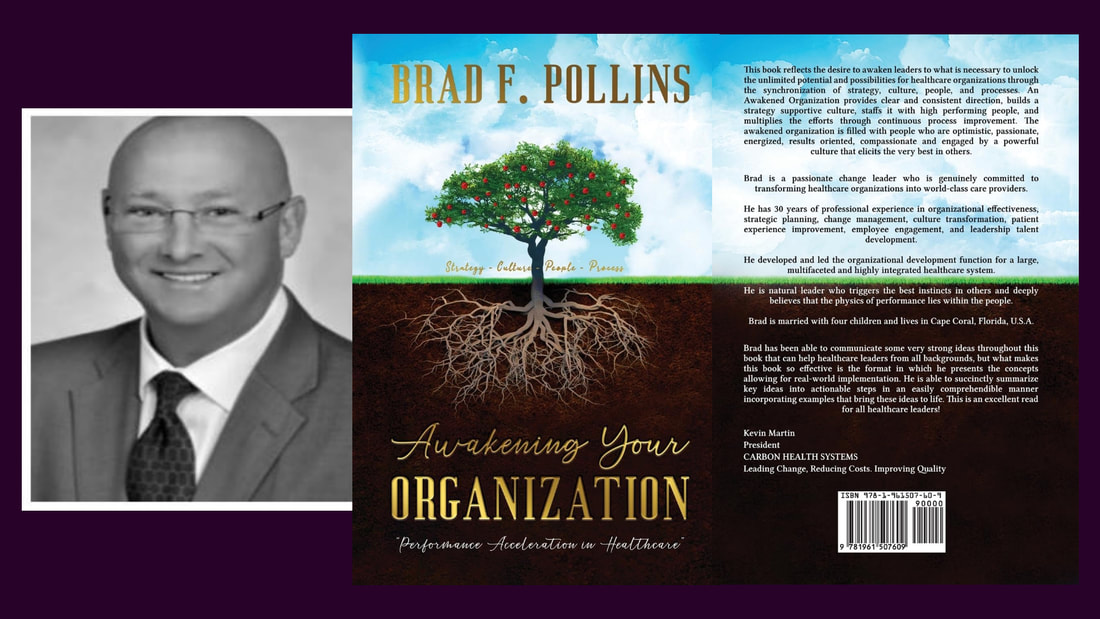
 RSS Feed
RSS Feed
